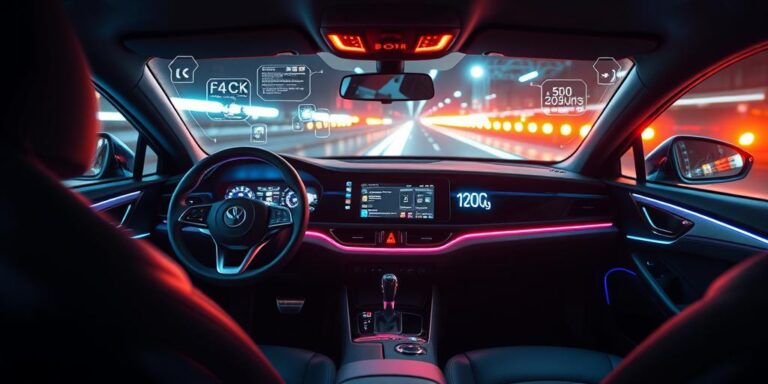Automotive Computing: The Software-Defined Car of 2027
The automotive industry is undergoing a radical transformation, driven by advancements in computing power and software integration. By 2027, the concept of the ‘software-defined car’ will be fully realized, impacting vehicle architecture, functionality, and user experience. This article explores the key trends and technologies shaping the future of automotive computing.
Evolving Vehicle Architecture
Traditional vehicles rely on a distributed network of electronic control units (ECUs), each responsible for specific functions. The software-defined car consolidates these functions onto a few high-performance computing platforms. This transition offers several advantages:
- Reduced Complexity: Fewer ECUs simplify wiring harnesses and reduce overall system complexity.
- Centralized Control: Centralized computing enables seamless integration of various vehicle systems.
- Over-the-Air (OTA) Updates: Software updates can be deployed remotely, enhancing vehicle performance and adding new features without physical intervention.
Key Technologies Driving the Transformation
Several key technologies are converging to enable the software-defined car:
- High-Performance Computing (HPC): Powerful processors and GPUs are essential for handling complex tasks such as autonomous driving, advanced driver-assistance systems (ADAS), and immersive infotainment.
- Software-Defined Networking (SDN): SDN enables flexible and dynamic management of network resources within the vehicle, optimizing data flow and communication between different systems.
- Artificial Intelligence (AI) and Machine Learning (ML): AI and ML algorithms are crucial for processing sensor data, making real-time decisions, and personalizing the driving experience.
- Advanced Operating Systems: Real-time operating systems (RTOS) and hypervisors provide a stable and secure platform for running critical vehicle functions.
- Cybersecurity: Robust security measures are essential to protect vehicles from cyberattacks and ensure data privacy.
The Impact on Functionality and User Experience
The software-defined car will offer a wide range of new functionalities and enhanced user experiences:
- Autonomous Driving: Self-driving capabilities will become more sophisticated and widespread, improving safety and convenience.
- Personalized Experiences: AI-powered systems will learn driver preferences and customize vehicle settings, entertainment options, and navigation routes.
- Advanced ADAS Features: ADAS features such as adaptive cruise control, lane keeping assist, and automatic emergency braking will become more refined and integrated.
- Immersive Infotainment: High-resolution displays, augmented reality (AR), and advanced audio systems will transform the in-car entertainment experience.
- Connectivity: Seamless connectivity to the cloud will enable access to real-time traffic information, remote diagnostics, and a variety of connected services.
Challenges and Opportunities
The transition to the software-defined car presents several challenges:
- Software Complexity: Developing and managing complex software systems requires specialized expertise and rigorous testing.
- Security Risks: Increased connectivity and software integration create new attack vectors for cybercriminals.
- Data Privacy: Protecting sensitive user data is crucial to maintaining trust and complying with regulations.
However, the opportunities are immense. The software-defined car has the potential to revolutionize the automotive industry, creating new business models, improving safety and efficiency, and enhancing the driving experience.
Conclusion
By 2027, the software-defined car will be a reality, transforming the way we drive and interact with our vehicles. As computing power continues to increase and software technologies advance, the automotive industry will enter a new era of innovation and possibilities. Focusing on HPC, SDN, AI/ML, and Cybersecurity will be paramount to ensure future success. These technologies will create safer, more efficient, and personalized vehicles.




